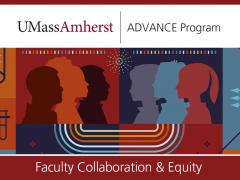Researchers at Uppsala University were able to document and visualize genes associated with hearing loss in the human inner ear, in a unique collaborative study between otosurgeons and geneticists. The results show that discrete subcellular structures in the human auditory organ, the cochlea, are involved in the variation in the risk of hearing loss with age in the population. The study is published in BMC Medicine.
Hearing loss is a potentially debilitating disease that affects more than 1.23 billion people worldwide. The most common form of hearing loss, which accounts for 90% of all cases, is linked to the degenerative effects of aging on hearing, that is, age-related hearing loss or presbycusis. However, the molecular mechanisms underlying the development of age-related hearing loss and individual variation in risk are poorly understood.
In the present study, a unique collaboration was established between otologists and geneticists at Uppsala University, which enabled functional follow-up studies of candidate genes from genome-wide association studies (GWAS) using the immunohistochemistry in the human cochlea.
“The cochlea, and in particular the auditory organ, the Organ of Corti, is a very vulnerable structure that is difficult to analyze because it is surrounded by the hardest bone in the body,†says Helge Rask-Andersen, MD and Senior Professor in the Department of Surgical Sciences. “We were able to study some of the molecular components of human hearing which are essential for the conversion of sound into nerve electrical impulses.”
Genetic variants in 67 genomic regions have been shown to contribute to an increased risk of age-related hearing loss. Genome-wide association studies (GWAS) on hearing-related traits have been performed at UK Biobank, which has half a million participants from the UK. Genetic associations are difficult to interpret on their own, and follow-up experiments are often required before causal genes can be inferred.
It is an incredible opportunity to be able to follow our findings in human cochlear samples, as there are molecular differences between the human auditory organ and other mammals. ”
Mathias Rask-Andersen, Associate Professor, Department of Immunology, Genetics and Pathology
Candidate GWAS proteins were visualized with immunofluorescent antibodies and super-resolution structured illumination microscopy (SR-SIM) by Dr. Wei Liu, MD and associate professor in the Department of Surgical Sciences. Several proteins have been observed in the spiral ganglion, which contains the neuronal cell bodies that innervate the hair cells of the organ of Corti and carry neuronal impulses to the brain via the cochlear nerve.
The researchers were also able to visualize for the first time in humans proteins associated with hearing loss in discrete subcellular domains of hair cells, such as TRIO and the F-actin-binding protein (TRIOBP) in the tufts of hair (stereocilia) and the LIM domain protein only. 7 (LMO7) in the cuticular plaque, which is an actin-rich structure that anchors the stereocilia to the cell body. Stereocilia are the microscopic or nanoscale “hairs” that protrude from the hair cells of the organ of Corti. They respond to the mechanical vibrations of sounds reaching us and are transferred and amplified from the eardrum to the inner ear by the small bones of the middle ear.
Taken together, the results of the present study demonstrate that common genetic variations associated with age-related hearing loss affect the structures of the cochlea, in particular the neural processes of the spiral ganglion, but also the structures directly involved in transduction. from mechanical stimuli to neural impulses. This knowledge can help to better understand the biological mechanisms that lead to age-related hearing loss and to generate prevention strategies such as new pharmacological treatments.
Source:
Journal reference:
Liu, W., et al. (2021) A combined genome-wide association and molecular study of age-related hearing loss in H. sapiens. BMC Medicine. doi.org/10.1186/s12916-021-02169-0.
 Xing Wu
Xing Wu



